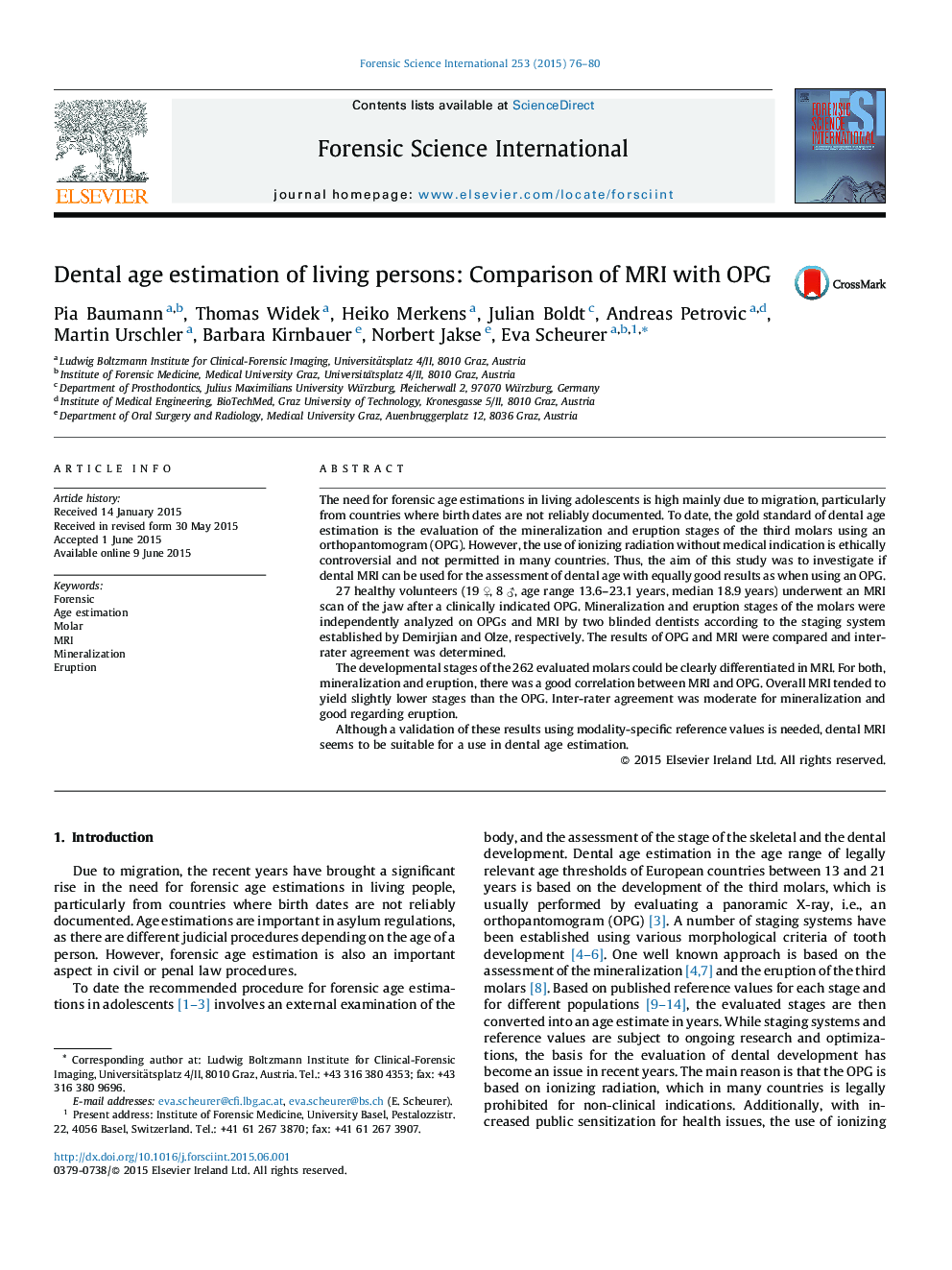| کد مقاله | کد نشریه | سال انتشار | مقاله انگلیسی | نسخه تمام متن |
|---|---|---|---|---|
| 95259 | 160423 | 2015 | 5 صفحه PDF | دانلود رایگان |
• Excellent visibility of dental structures used for assessment of dental age in MRI.
• Good agreement of mineralization and eruption stages seen in MRI with OPG.
• Higher assessibility of third molars of the upper jaw in MRI due to 3D technique.
The need for forensic age estimations in living adolescents is high mainly due to migration, particularly from countries where birth dates are not reliably documented. To date, the gold standard of dental age estimation is the evaluation of the mineralization and eruption stages of the third molars using an orthopantomogram (OPG). However, the use of ionizing radiation without medical indication is ethically controversial and not permitted in many countries. Thus, the aim of this study was to investigate if dental MRI can be used for the assessment of dental age with equally good results as when using an OPG.27 healthy volunteers (19 ♀, 8 ♂, age range 13.6–23.1 years, median 18.9 years) underwent an MRI scan of the jaw after a clinically indicated OPG. Mineralization and eruption stages of the molars were independently analyzed on OPGs and MRI by two blinded dentists according to the staging system established by Demirjian and Olze, respectively. The results of OPG and MRI were compared and inter-rater agreement was determined.The developmental stages of the 262 evaluated molars could be clearly differentiated in MRI. For both, mineralization and eruption, there was a good correlation between MRI and OPG. Overall MRI tended to yield slightly lower stages than the OPG. Inter-rater agreement was moderate for mineralization and good regarding eruption.Although a validation of these results using modality-specific reference values is needed, dental MRI seems to be suitable for a use in dental age estimation.
Journal: Forensic Science International - Volume 253, August 2015, Pages 76–80
